Re: Como Roundhouse Addition
Posted by Jim Courtney on Aug 17, 2017; 8:37pm
URL: http://c-sng-discussion-forum.254.s1.nabble.com/Como-Roundhouse-Addition-tp9120p9138.html
The premise of this thread is that the wooden extension of the Como roundhouse, in place by the late 1890s, was at some time in the 'teens or twenties, burned, demolished or other wise removed. Materials from the two-track, six-engine wood engine house at Dickey are hypothesized to have been used to build a new wood addition to the stone roundhouse at Como. This structure in turn burned in 1935.
I've gone back to my books and photos the last couple of days to see if the evolution of the Como round house can be further fine tuned.
In the various books, photo captions, and posts on this forum, there is a lot of confusion with the terms "first addition, second addition, etc".
I've tried to come up with a time line of structures at both Como and Dickey, to better sort this out.
About 1880: The newly arrived DSP&P built the six stall stone roundhouse at Como, the structure that stands today.
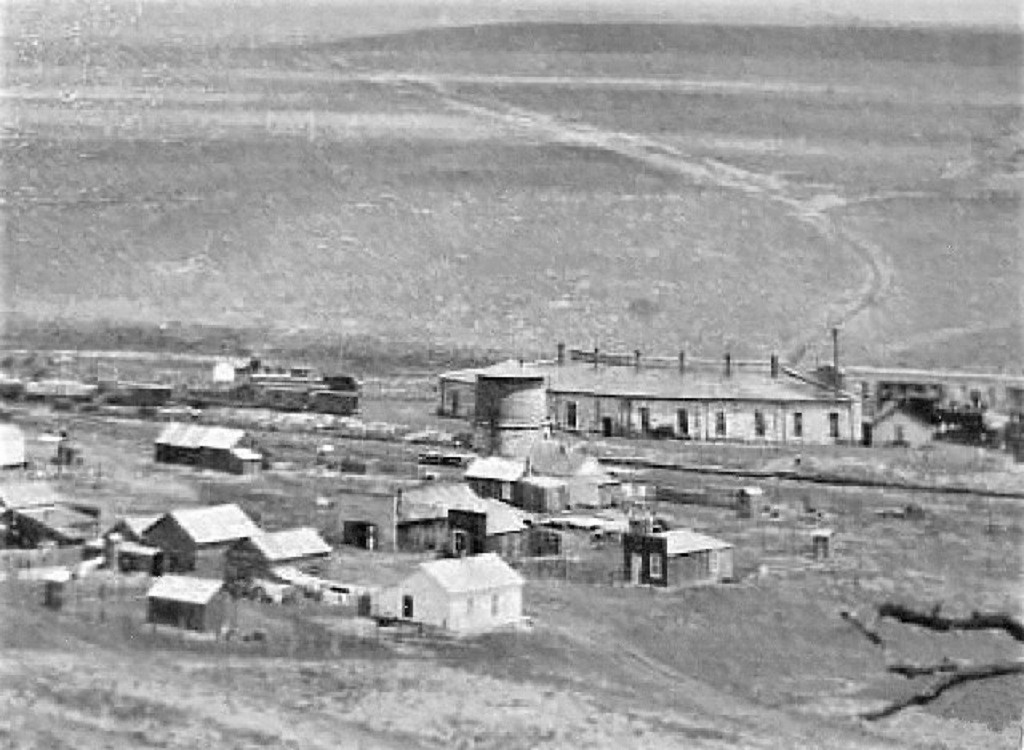
Circa 1883, Jeff Ramsey posted photo.
Late 1880's: The first engine house was constructed at Dickey, unknown dimension, possibly to house the locomotive for the Keystone Branch mixed train.
Late 1880s: A first wooden extension, unknown number of stalls, was added to the original stone roundhouse at Como.
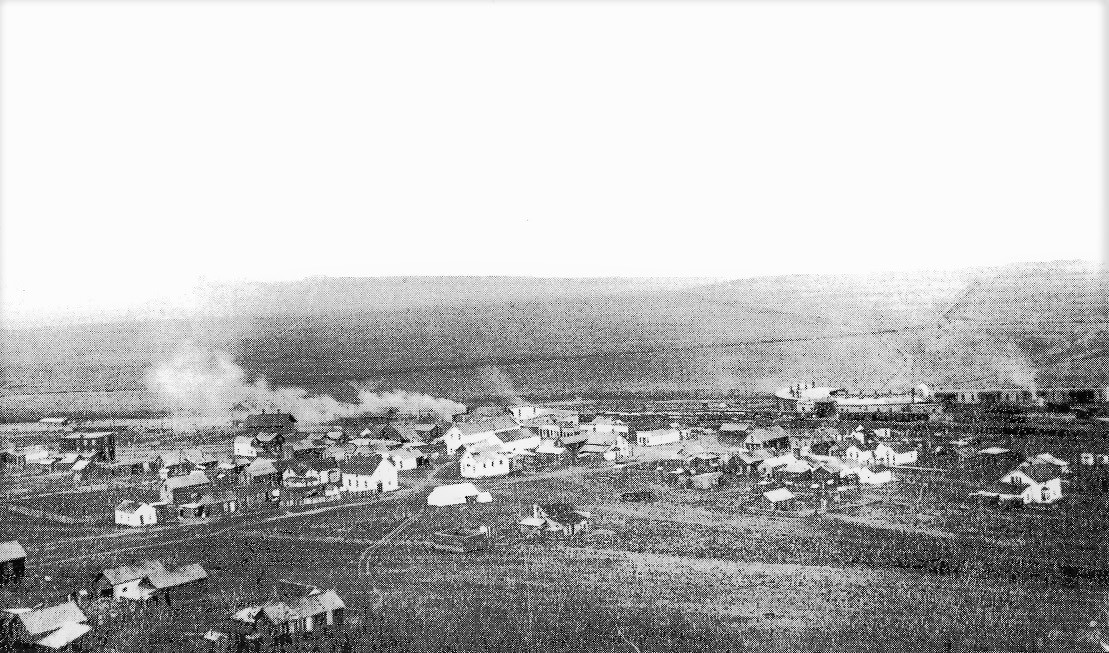
William Link Family, Tom Klinger collection, in C&S Highline Memories . . . This photo, dated 1892, shows the first wooden extension to the original stone Como roundhouse. Stone tenements are at right.
Mid 1890s: A second wooden extension to the Como roundhouse was added, creating a semicircular structure totaling 19 stalls (6 stone, 13 wood). Service tracks eventually ran through up to three of the stalls, from depot to turntable. Jeff Ramsey cites the demolition of wood engine houses at Platte Canon (possibly Grants, if one actually existed there) and the first engine house at Dickey, the materials used in construction of this second extension. http://c-sng-discussion-forum.41377.n7.nabble.com/Como-Stationary-Boiler-td4797.html#a4842
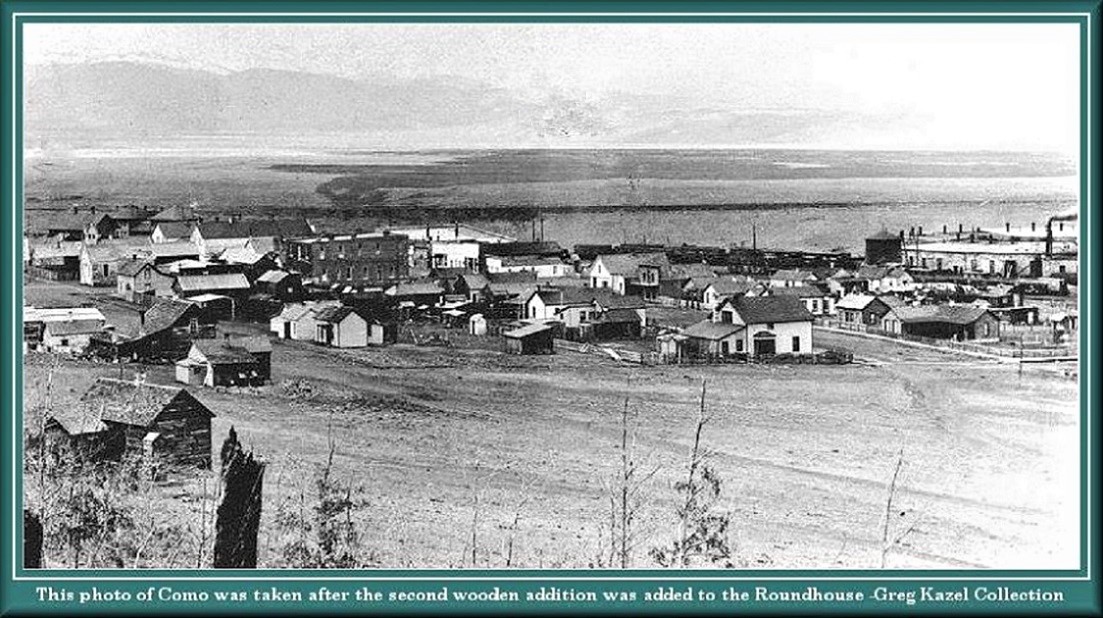
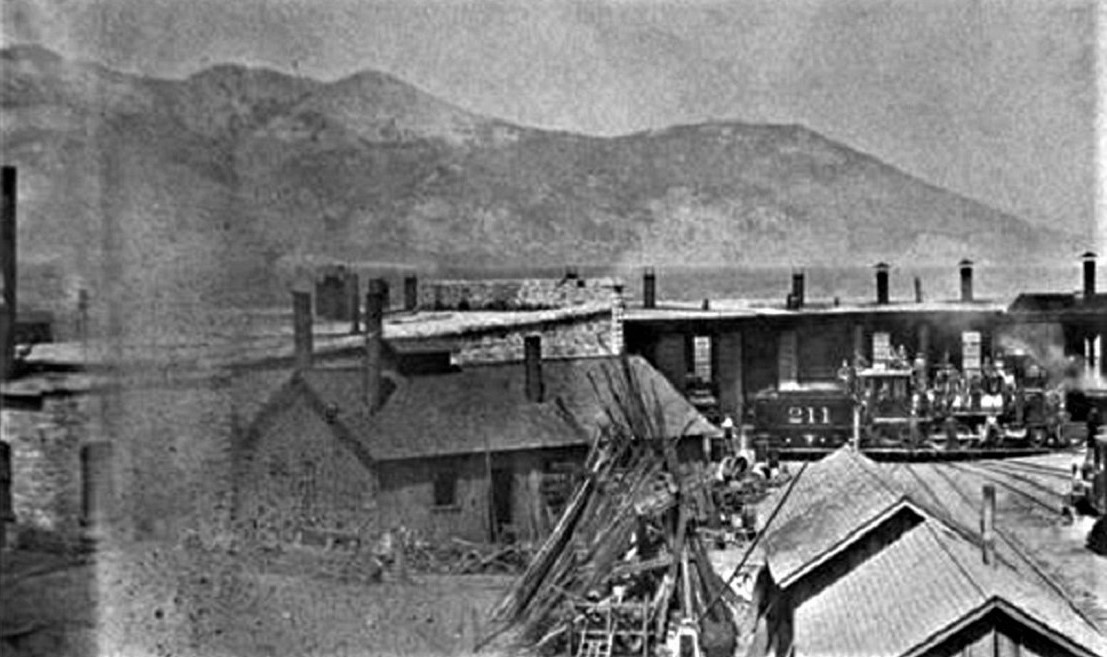
Jeff Ramsey posted photo, source unknown.
A break in the roof pitch is visible in the first view, more obvious in the second photo, just over the stack of DL&G 211.
1902: At Dickey, the new C&S management builds the familiar two track engine house (see Darel's post at the top of this thread) and a twelve pocket coaling trestle with chutes serving two tracks (Mac Poor in Denver South Park and Pacific). Dickey is now a major helper station, for freights eastbound to Boreas and westbound up the Tenmile.
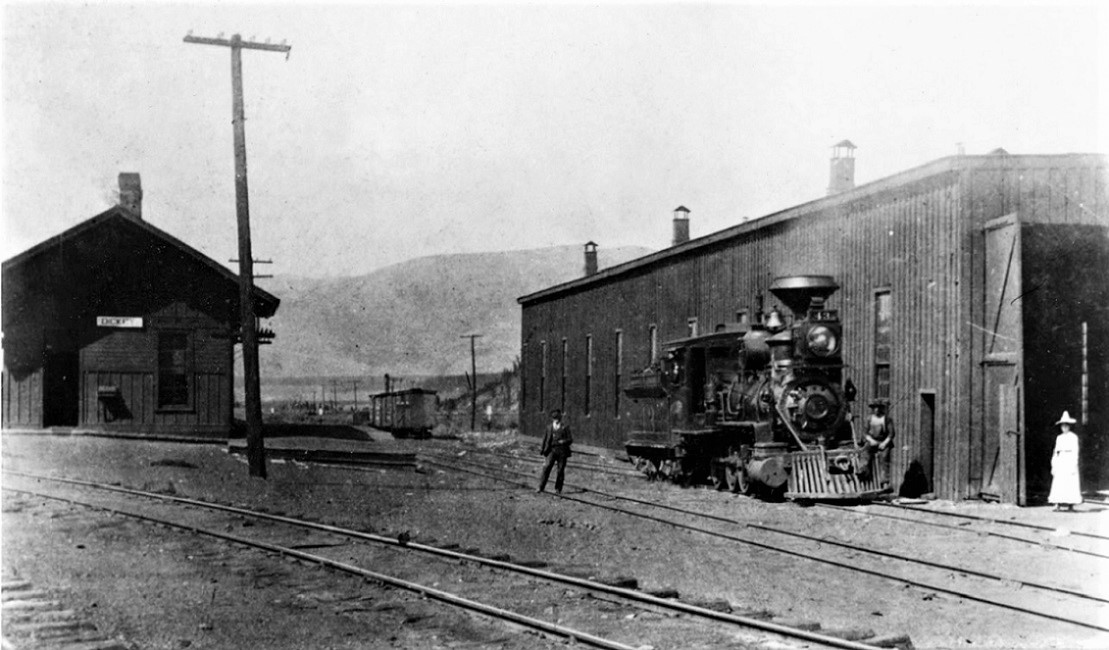
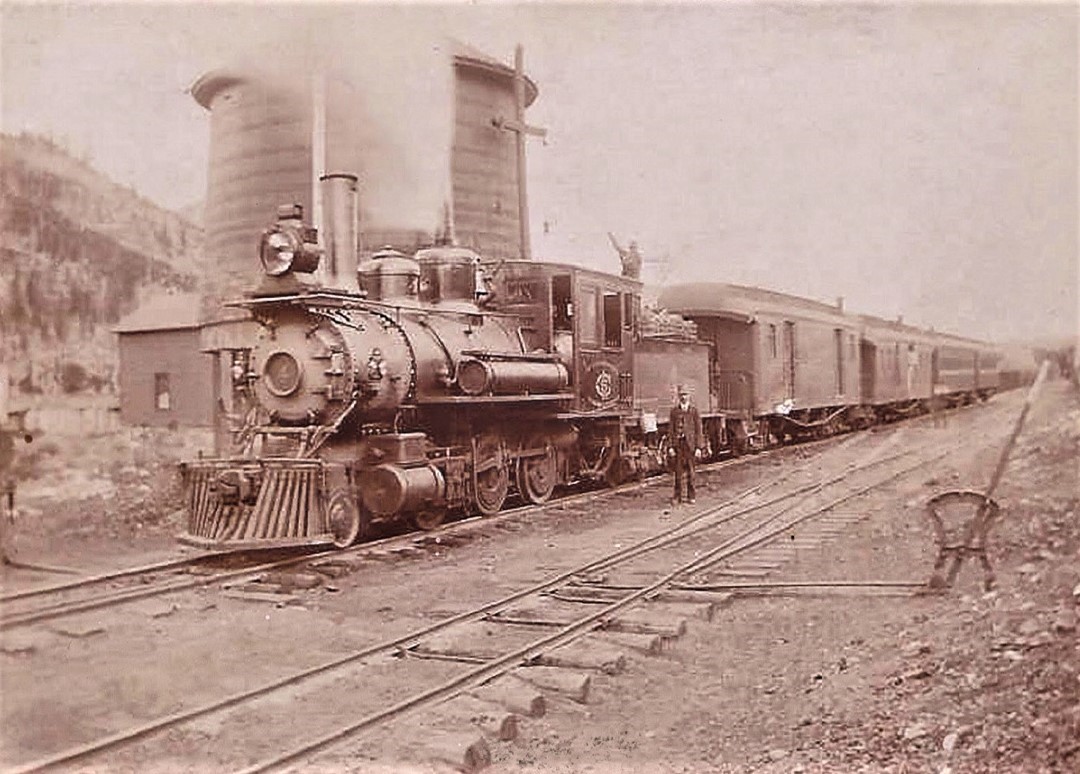
Coal chutes visible in distance at right frame.
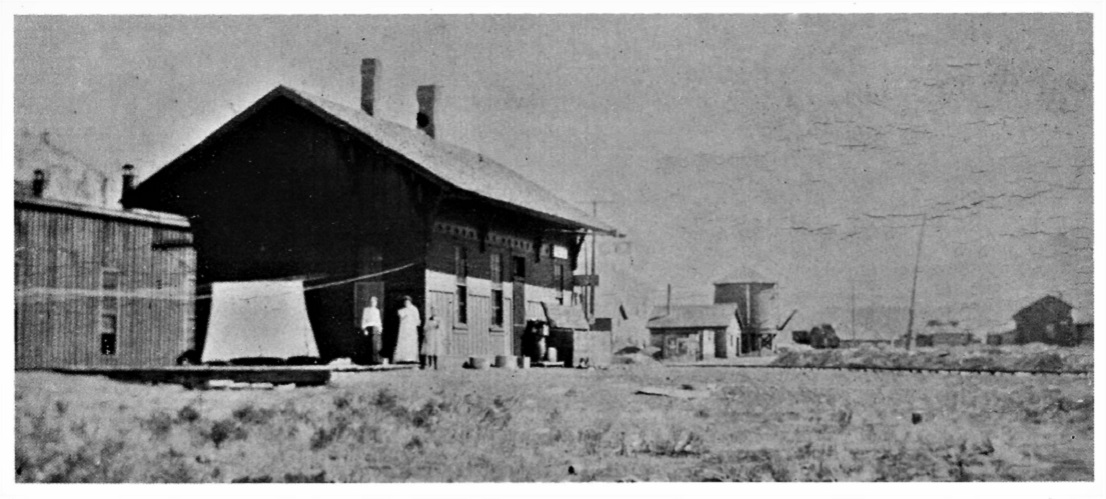
Ronzio collection, in Digerness, The Mineral Belt, Volume II. Dickey in the first decade, looking south.
By 1906: The first and second Como wood roundhouse extensions have been remodeled with seamless new roof:
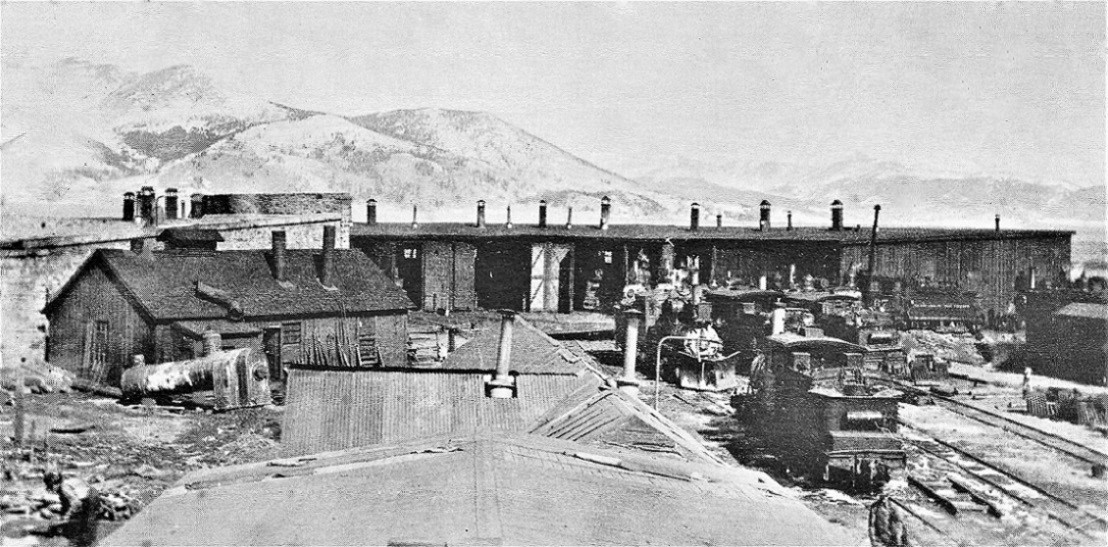
Fall 1910: C&S under new CB&Q management, abandons Gunnison extension beyond Hancock, Trout Creek line from Garos to Buena Vista, and closes operations over Boreas, Como to Breckenridge. The machine shops in the Como roundhouse were closed, the railroad work forced mostly transferred or discharged. Como as a community was devastated (total payrolls to Como in 1909 was $53,084.00; by 1911, total payroll $2,034.00). Fifty families remained in town in 1911 (hoping things would get better), falling to 12 families in 1912 (as things got worse).
Early to mid 19teens: Even when Boreas operations resumed in 1913, the larger 2-8-0s (the Rhode Islands and the two large classes of Baldwins) that were freed up from the abandoned operations south of Garos were sufficient to handle the diminished traffic. In 1911, 14 of the 19 stalls in the Como roundhouse were storing dead engines, the lighter number 30 and thirteen of the Cooke 2-8-0s, "stored in white lead".
The Dickey engine house had likely seen little use since the fall of 1910, but appears to be still there, though not visible in the only photo that I know of in that era, perhaps hidden by the pump house at right frame:
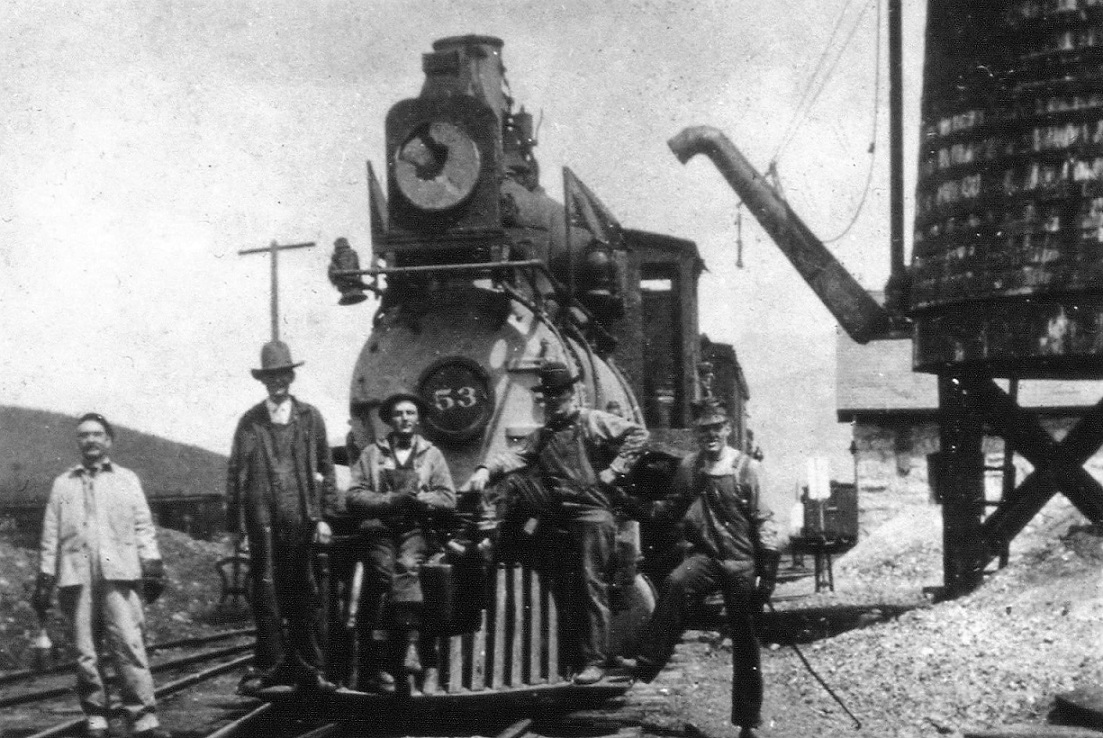
Summer of 1918: Per the 1918 C&S Valuation Maps, both the Dickey enginehouse and the Como roundhouse extension remain in place. See the reproduced map of Dickey that Risk Steele posted in the "Files" section. The Como map is below:
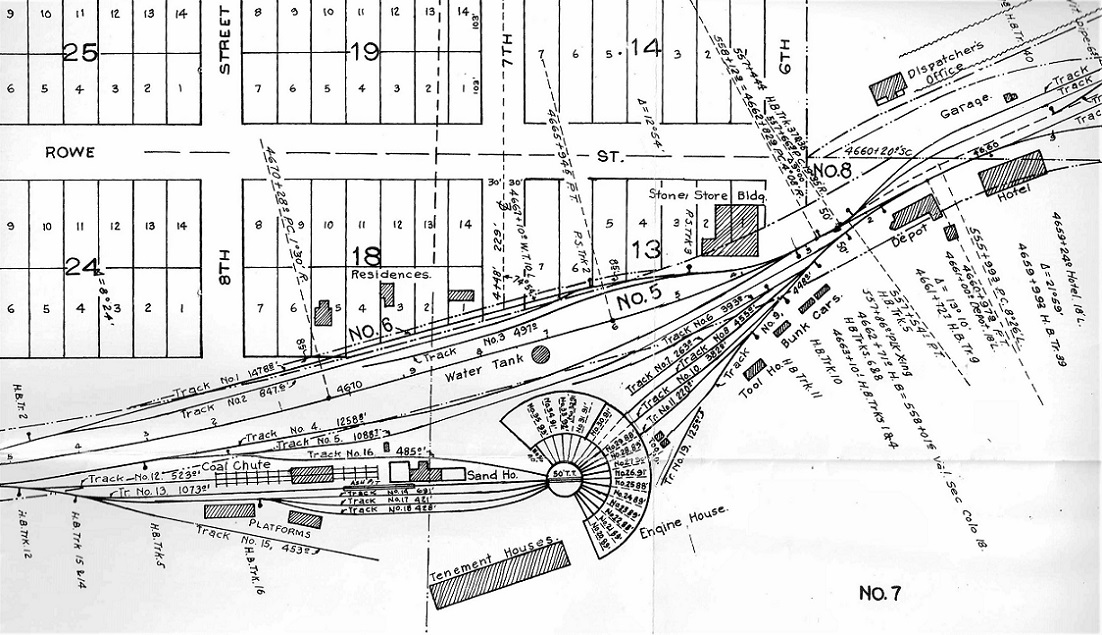
Between 1917 and 1920, four of the Cooke 2-8-0s (39, 45, 48 and 54) were pulled from their stalls in the Como roundhouse, hauled to Denver and sold to the Hallack & Howard Lumber Co. for use at their logging operations at La Madera, NM.
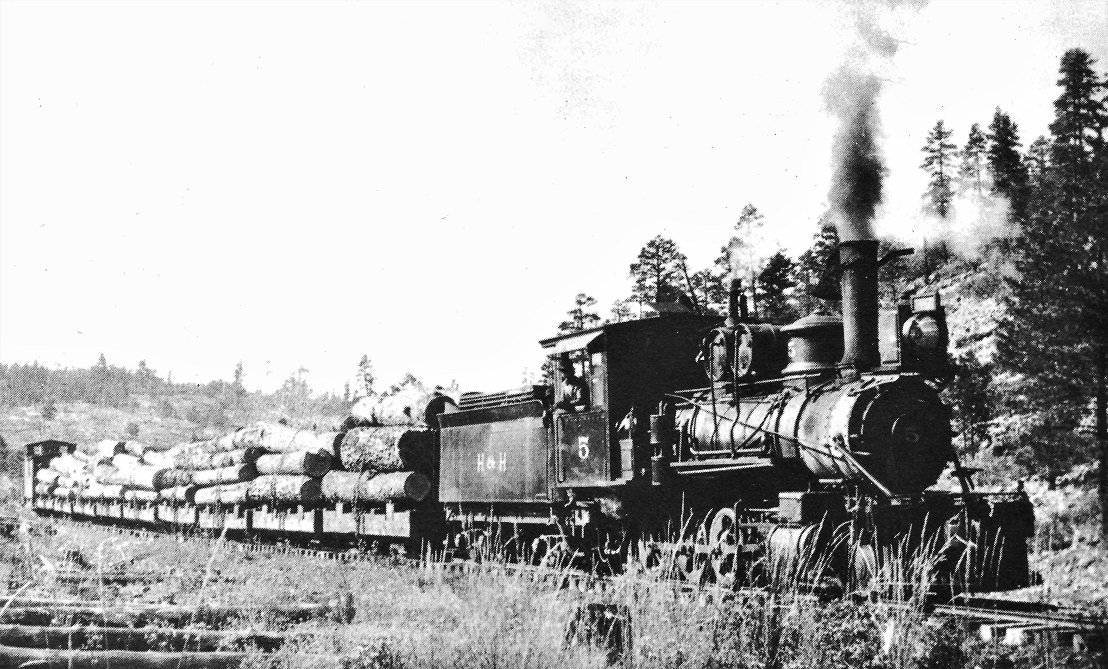
Ex C&S number 45 in 1921. W. J. Duteau photo in "Logging Along the Rio Grande". The Cooke 2-8-0 is back to work after a seven year slumber in one of the wood stalls of the Como roundhouse.
Also in 1918, two more of the Como stored Cookes were scrapped (52 and 53) and Cooke 55 was hauled to Denver, refurbished and sold to the Bellevue and Cascade.
1920: Photo of wrecked number 67 shows the back wall of the wood roundhouse still in place.

In the Klingers' C&S Platte Canon Memories . . .
1921: In January, five of the remaining Como roundhouse stored locomotives (Cookes 42, 43, 47, 49 and 50) left Como to be traded to Morse Brothers in Denver for the three big Brookes locomotives, C&S 74, 75 and 76.
Finally in the summer of 1921, the last two locomotives stored in the wood roundhouse (Balwin 30 and Cooke 40) were hauled to Denver for scrapping.
Unknowns: I still haven't found any cited text to state when the Dickey engine house came down. Sometime between 1921 and the Denver Water Board Special of January 1929, the original wood roundhouse stalls were removed (burned, razed?) and a new, smaller ("third") wood extension to the stone roundhouse was built, as in the 1929 photo above. Or perhaps the original structure was truncated and remodeled? Were materials from the Dickey engine house, finally taken down, involved in this construction?
It occurred to me that there was a major fire involving the stone tenement building, perhaps part or all of the original wood roundhouse went up with it or was damaged prompting demolition. I seem to recall a thread on this forum about the fire, but can't seem to locate it.
I had thought the tenement to be completely destroyed, but another Denver Water Special photo in January, 1929, shows one end in ruins, the other still in use by the section foreman, John DeLeo and his brother:
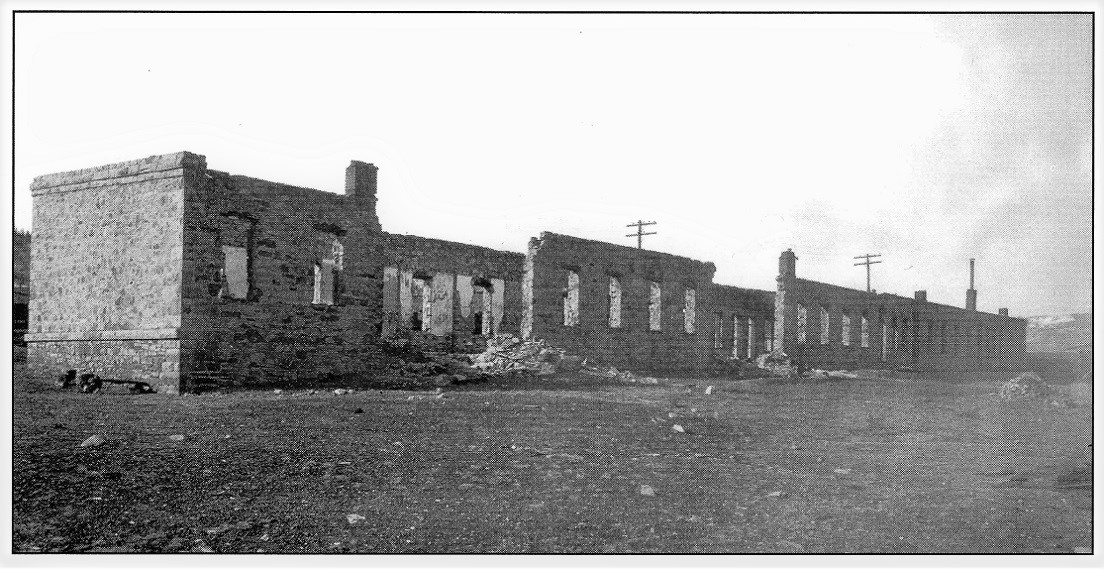
in the Klingers' C&S High Line Memories . . .
1935: The "third" wooden extension of the roundhouse burns, leaving the original six-stall stone roundhouse as the only building standing
I'd love to see Jeff Ramsey comment here, correcting any of my misstatements. Anyone know of a floor plan for the "third" and final wood extension to the roundhouse?
URL: http://c-sng-discussion-forum.254.s1.nabble.com/Como-Roundhouse-Addition-tp9120p9138.html
The premise of this thread is that the wooden extension of the Como roundhouse, in place by the late 1890s, was at some time in the 'teens or twenties, burned, demolished or other wise removed. Materials from the two-track, six-engine wood engine house at Dickey are hypothesized to have been used to build a new wood addition to the stone roundhouse at Como. This structure in turn burned in 1935.
I've gone back to my books and photos the last couple of days to see if the evolution of the Como round house can be further fine tuned.
In the various books, photo captions, and posts on this forum, there is a lot of confusion with the terms "first addition, second addition, etc".
I've tried to come up with a time line of structures at both Como and Dickey, to better sort this out.
About 1880: The newly arrived DSP&P built the six stall stone roundhouse at Como, the structure that stands today.

Circa 1883, Jeff Ramsey posted photo.
Late 1880's: The first engine house was constructed at Dickey, unknown dimension, possibly to house the locomotive for the Keystone Branch mixed train.
Late 1880s: A first wooden extension, unknown number of stalls, was added to the original stone roundhouse at Como.

William Link Family, Tom Klinger collection, in C&S Highline Memories . . . This photo, dated 1892, shows the first wooden extension to the original stone Como roundhouse. Stone tenements are at right.
Mid 1890s: A second wooden extension to the Como roundhouse was added, creating a semicircular structure totaling 19 stalls (6 stone, 13 wood). Service tracks eventually ran through up to three of the stalls, from depot to turntable. Jeff Ramsey cites the demolition of wood engine houses at Platte Canon (possibly Grants, if one actually existed there) and the first engine house at Dickey, the materials used in construction of this second extension. http://c-sng-discussion-forum.41377.n7.nabble.com/Como-Stationary-Boiler-td4797.html#a4842


Jeff Ramsey posted photo, source unknown.
A break in the roof pitch is visible in the first view, more obvious in the second photo, just over the stack of DL&G 211.
1902: At Dickey, the new C&S management builds the familiar two track engine house (see Darel's post at the top of this thread) and a twelve pocket coaling trestle with chutes serving two tracks (Mac Poor in Denver South Park and Pacific). Dickey is now a major helper station, for freights eastbound to Boreas and westbound up the Tenmile.


Coal chutes visible in distance at right frame.

Ronzio collection, in Digerness, The Mineral Belt, Volume II. Dickey in the first decade, looking south.
By 1906: The first and second Como wood roundhouse extensions have been remodeled with seamless new roof:

Fall 1910: C&S under new CB&Q management, abandons Gunnison extension beyond Hancock, Trout Creek line from Garos to Buena Vista, and closes operations over Boreas, Como to Breckenridge. The machine shops in the Como roundhouse were closed, the railroad work forced mostly transferred or discharged. Como as a community was devastated (total payrolls to Como in 1909 was $53,084.00; by 1911, total payroll $2,034.00). Fifty families remained in town in 1911 (hoping things would get better), falling to 12 families in 1912 (as things got worse).
Early to mid 19teens: Even when Boreas operations resumed in 1913, the larger 2-8-0s (the Rhode Islands and the two large classes of Baldwins) that were freed up from the abandoned operations south of Garos were sufficient to handle the diminished traffic. In 1911, 14 of the 19 stalls in the Como roundhouse were storing dead engines, the lighter number 30 and thirteen of the Cooke 2-8-0s, "stored in white lead".
The Dickey engine house had likely seen little use since the fall of 1910, but appears to be still there, though not visible in the only photo that I know of in that era, perhaps hidden by the pump house at right frame:

Summer of 1918: Per the 1918 C&S Valuation Maps, both the Dickey enginehouse and the Como roundhouse extension remain in place. See the reproduced map of Dickey that Risk Steele posted in the "Files" section. The Como map is below:

Between 1917 and 1920, four of the Cooke 2-8-0s (39, 45, 48 and 54) were pulled from their stalls in the Como roundhouse, hauled to Denver and sold to the Hallack & Howard Lumber Co. for use at their logging operations at La Madera, NM.

Ex C&S number 45 in 1921. W. J. Duteau photo in "Logging Along the Rio Grande". The Cooke 2-8-0 is back to work after a seven year slumber in one of the wood stalls of the Como roundhouse.
Also in 1918, two more of the Como stored Cookes were scrapped (52 and 53) and Cooke 55 was hauled to Denver, refurbished and sold to the Bellevue and Cascade.
1920: Photo of wrecked number 67 shows the back wall of the wood roundhouse still in place.

In the Klingers' C&S Platte Canon Memories . . .
1921: In January, five of the remaining Como roundhouse stored locomotives (Cookes 42, 43, 47, 49 and 50) left Como to be traded to Morse Brothers in Denver for the three big Brookes locomotives, C&S 74, 75 and 76.
Finally in the summer of 1921, the last two locomotives stored in the wood roundhouse (Balwin 30 and Cooke 40) were hauled to Denver for scrapping.
Unknowns: I still haven't found any cited text to state when the Dickey engine house came down. Sometime between 1921 and the Denver Water Board Special of January 1929, the original wood roundhouse stalls were removed (burned, razed?) and a new, smaller ("third") wood extension to the stone roundhouse was built, as in the 1929 photo above. Or perhaps the original structure was truncated and remodeled? Were materials from the Dickey engine house, finally taken down, involved in this construction?
It occurred to me that there was a major fire involving the stone tenement building, perhaps part or all of the original wood roundhouse went up with it or was damaged prompting demolition. I seem to recall a thread on this forum about the fire, but can't seem to locate it.
I had thought the tenement to be completely destroyed, but another Denver Water Special photo in January, 1929, shows one end in ruins, the other still in use by the section foreman, John DeLeo and his brother:

in the Klingers' C&S High Line Memories . . .
1935: The "third" wooden extension of the roundhouse burns, leaving the original six-stall stone roundhouse as the only building standing
I'd love to see Jeff Ramsey comment here, correcting any of my misstatements. Anyone know of a floor plan for the "third" and final wood extension to the roundhouse?
Jim Courtney
Poulsbo, WA
Poulsbo, WA
| Free forum by Nabble | Edit this page |